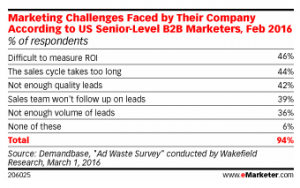As any seasoned digital nomads will tell you, search engine optimization (SEO) is an intense battleground for businesses. There’s constant competition and jockeying for position, as rivals go to war with one another for prime spots in search engine results pages (SERPs). Those who succeed put themselves at a major advantage over their competitors.
Whatever line of business you’re in the chances are that the competition will be hard-fought. In the online space in particular, there are so many companies tussling with one another for prominence, it can be tough to carve out a sustainable niche for yourself. This is why SEO visibility matters so much.
But you shouldn’t expect everyone else to play by Queensbury rules, so to speak. Negative SEO is a very real problem, and one you should be aware of. If your competitors are really desperate to displace your website from its position in SERPs, they may resort to negative SEO tactics – and these can do real damage to your standing in the marketplace.

The term ‘negative SEO’ can encompass a range of techniques, primarily aimed at driving the targeted site down the SERPs rankings. And – to add insult to injury – giving Google the impression that the site being sabotaged is the one breaching the rules.
Given the importance of search engine visibility in terms of attracting new customers, and thus driving sales and revenue, the deployment of negative SEO can be seriously damaging. You could find, if your site is the one targeted, that many of your efforts are undone almost overnight. This would be a great injustice, as well as a major commercial threat, to anyone who’s worked hard to build up a business.
To help you ward off the threat of negative SEO attacks, we’ve assembled this guide to give you an overview of the problem. We’ll explain in more detail what negative SEO is, and the forms these attacks take. Then, we’ll list some suggestions to help you protect your business against negative SEO.
What is negative SEO – and is it a threat?
So, as we’ve discussed, negative SEO is the practice of deliberately trying to sabotage a company’s position in search engine results pages, and they may utilize anything including unofficially associated whole in-house teams to execute the attacks. Of course, there are sites which themselves use dubious SEO tactics and damage their own standing as a consequence. But negative SEO refers to deliberate efforts to do rivals down by hurting their online presence.
Negative SEO can take a variety of forms, but the most frequent is purchasing large quantities of low-quality, spammy links so as to make Google think that the site being targeted has bought those links itself. The desired result is that Google then punishes the site being sabotaged for supposedly having tried to bend the rules. Thus sending it spiraling down the rankings despite it being the victim of an attack by a rival.
There are other types of negative SEO attacks, however. For example, a company looking to leapfrog a competitor in the SERPs may simply copy the latter’s SEO copywriting content and distribute it across the internet, thereby making it appear like spam.
Alternatively, it may use spammy keywords to point links to the competitor website, or attempt to displace the most authoritative backlinks that the site being targeted has managed to attain.

Another tactic, and one that’s increasingly common, is to wreck a company’s online reputation by creating fake profiles to leave negative, one-star reviews. The objective here, of course, is to deter consumers from buying that company’s products or services, as well as potentially preventing it from recruiting top talent by making it look disreputable.
The exact efficacy of negative SEO tactics has been the subject of much debate. Google has done much to battle them, but they are potentially a serious threat. There are plenty of people out there prepared to do this kind of work, and for a very modest fee. This can make negative SEO attractive to businesses struggling for organic visibility (and perhaps revenue as well), because it appears to hold out the possibility of a quick fix.
Whatever you do, don’t automatically assume that your rivals are too honorable and decent to resort to these cynical tactics.
What negative SEO can do to your site
Negative SEO attacks can have a number of negative consequences for your site. These can be very difficult to unpick once the damage is done, which is why – as we’ll come on to discuss in a later section – it’s better to take pre-emptive action to protect yourself.
We’ve already touched on how your content might be copied and distributed across other sites in order to do damage to its placing in SERPs. But even if this duplicated content doesn’t hurt your SERPs position, the content you’ve created is reposted elsewhere – without attribution. This means others are benefiting from your work, without having contributed anything to its creation.
However, another possibility is that the duplication of your content turns any internal links leading to pages on your site into syndicated links (i.e. external links pointing to your website). This is what could attract the attention of Google. Google is happy to reward good internal linking, but it’s not so keen on syndicated links.
As a result, Google could get the impression that you’ve been deliberately churning out spammy, low-value links. They’d then push your website down the SERPs pages, making it harder for users to find.

Another potential problem here is that spammy external links could corrupt your search data. Google’s search console has a cut-off point of 100,000 links. So, if you’ve got more than that pointing to your site, there’ll be some links (potentially authoritative ones) which aren’t included in its reports – depriving you of website analytics insights you need.
You could pay for third-party sites and get data over and above that 100,000 cut-off, but that’ll obviously cost you more money. If you’ve been pushed over that point by spammy and malicious links, it’s money you shouldn’t have to pay.
We’ve also noted that negative SEO can take the form of hacking content. So, for instance, your content might be hacked so that links pointing to malware are included. If Google then crawled the affected pages and found malware links, it would be likely to drive it down SERPs and mark the site as unsafe.
This could also be an issue with user-generated content, if you host it on your site. Perhaps in the form of comments sections, for example. These are very commonly spammed by bots, and if Google finds links to malware among the user comments after a blog post about micro funnels, say, it’ll punish your site as a consequence.
Recognizing the signs of negative SEO
So, now we’ve discussed what negative SEO is and what it involves, we need to look at how you might recognize the tell-tell signs of an attack. If your site has been targeted and the attack has proven to be effective, it shouldn’t be long before you start to see the effects – and the damage can be substantial.
The first indicator of a negative SEO attack is a sudden, sharp drop in search traffic. If you spot that visits through search have dropped off a cliff, without you having made any major changes to your site, this may be an indication that your site has been targeted with negative SEO tactics.
Of course, there can be other reasons for a sudden fall-off in search traffic – an algorithm change, for example – so don’t leap to conclusions right away. However, if there are no other obvious potential causes, then negative SEO might be the issue.

You should be able to distinguish between the two without much difficulty. The first you’ll know about an algorithmic penalty, where this is the cause, is when you see your search traffic drop off. If you’ve received a manual penalty from Google, by contrast, you should receive a Webmaster Tools notice letting you know you’ve been penalized.
So assuming your SEO tactics have been completely above board, any manual penalties you receive from Google are quite likely to be the consequence of a negative SEO attack. You may also notice that your rankings for individual keywords have dropped.
Where this gets complicated is in trying to undo the effects of negative SEO after an attack has already taken place. This would require quite a complex and long-winded process which we haven’t got space to discuss in the necessary detail here.
However, we will move on to suggest some ways of stopping negative SEO attacks in their tracks, thus hopefully saving you the hassle of having to try to patch things up after the event.
How to watch out for negative SEO attacks
Ultimately, fielding SEO attacks is a specialist’s job. In an ideal arrangement, you would have an expert who regularly does the necessary checks to survey, interpret, and address any negative attempts against your ranking. Personal development courses online can help you build up additional skills to strengthen SEO security.
As for immediately actionable steps, you must keep a watchful eye on your backlink profile. As we’ve noted, spammy link building is the most common negative SEO tactic. You need to keep on top of this; if someone is building dubious links and creating redirects, your site may be under attack.
Another key priority in safeguarding your site from negative SEO tactics is to protect your most authoritative links. Attackers will often try to get your best links removed simply by making a request to the relevant webmaster, pretending to be you. You should make sure that whenever you email a webmaster, you do so via a professional account with your website domain to verify that it’s you, rather than a Gmail or Yahoo account (for example).
Alternatively, a competitor may contact the webmaster and ask to replace the link to your site with one of their own. This may be a legitimate SEO tactic, so long as the replacement link offers more value to users than the one that’s currently there. Either way, you should check the status of your most high-value links regularly to ensure they’re still present.

Content duplication, as we’ve observed, is another common tactic used as part of negative SEO attacks. It can easily mean that your site gets pushed down search engine rankings. You should be vigilant and check for duplicate content on a regular basis; there are plagiarism checkers online which can save time and effort in this regard.
It may be worth reaching out to domains that have reposted your content without knowledge of malicious intent, and empathy exercises in these business interactions can help you turn the tide to your favor. Webmasters typically know the damage of this SEO attack and will often be favorable to your request.
If you find that content from your site has been stolen and reproduced elsewhere, you should start by contacting the website owner and asking them to remove it. If this doesn’t get you anywhere, you can file a DMCA takedown notice and get Google to pull the stolen content from SERPs. However, these notices are difficult to enforce.
There are other, preventative options. You can, for example, change your website code so as to disable RSS and restrict bots’ access to your XML sitemap.
You should also be very vigilant about hacking. In particular, you must ensure that your content management system (CMS) is kept up to date, along with other business software and tools. Older software may be prone to certain vulnerabilities that create opportunities for hackers. If they manage to get into your CMS and fill your pages with spammy or unsafe links, it can do your site a great deal of damage for the reasons already outlined.
Google Webmaster Tools can provide you with email alerts notifying you when, for example, your website is under attack from malware or (as we’ve discussed) your site receives a manual penalty. Make sure your website is connected to Webmaster Tools and configure your email preferences so that you receive emails as these issues arise.

Finally, remember to keep a close watch on your social media mentions. You should have alerts set up to notify you whenever someone is using your company or brand name on social media. If they notice any issues with your site and discuss them on social media, this should alert you to them.
Furthermore, make sure you check frequently to see just who’s using your company or brand name on social sites. If fake accounts have been set up using your branding, report them and get them taken down. You need to do this before they start to gain significant numbers of followers, or else it can be damaging to your reputation and confusing for innocent customers.
In conclusion
Negative SEO attacks can undo much of your good work, almost in the blink of an eye. No doubt you’ve worked incredibly hard, along with your colleagues, to build your business up to what it is today. There’s no reason why an unscrupulous rival should be allowed to use negative SEO simply to knock you down.
Running a business can be tough, and there’s a lot to take into account as it is – from landed costs to item data management – without negative SEO attacks adding to your existing burdens. You need to be proactive in protecting yourself from negative SEO simply to protect the gains of all that hard work. Before these incidents even occur, it’s best to have your SEO team be vigilant in themselves. At a team meeting, you can send out guidelines for preventive approaches and make surveillance an effort toward collaboration, or perhaps even upskilling.

Thankfully, most businesses won’t ever be on the receiving end of negative SEO. But it pays to be prepared just in case yours is one of the unlucky ones. If you’re ready and braced for an attack, you can prevent it from doing serious damage, thereby protecting your reputation (as well as your SERPs ranking) and minimizing any disruption caused.
Digital & Social Articles on Business 2 Community
(30)




